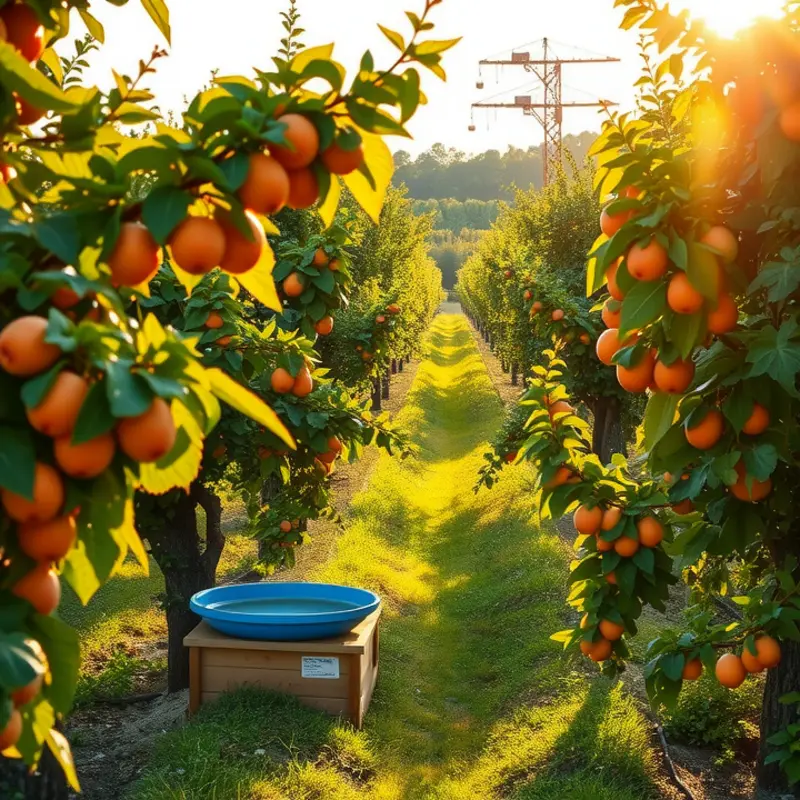Trading ports have served as vital crossroads for cultures, ideas, and, notably, culinary practices. This unique fusion of global flavors comes from ingredients and cooking techniques that mingle on the plates of sailors and merchants. These vibrant harbors are not just gateways to new lands but also culinary wonderlands where local traditions blend seamlessly with foreign influences, resulting in dishes that tell stories of exploration and exchange.
The Spice Routes: A Culinary Exchange

The vibrant tapestry of the world’s cuisines owes much to ancient trading routes. Among these, the Spice Routes played a pivotal role in bringing aromatic spices and new ingredients to distant shores. This exchange fundamentally altered local cuisines, transforming them into rich, multicultural experiences.
Consider the journey of black pepper. Native to the Malabar Coast of India, it traveled across the seas to the Roman Empire, where it became indispensable in European kitchens. Black pepper’s pungent heat added layers of complexity to otherwise bland dishes and became a symbol of culinary sophistication.
Similarly, the introduction of chilies to Asia is a fascinating story of exchange. After European explorers discovered the fiery pepper in the Americas, it quickly spread through Portuguese traders to India and Southeast Asia. Today, these fiery fruits are integral to the spicy kick in Thai and Indian curries. These dishes illustrate how culinary practices adapted to incorporate and celebrate new flavors.
Another quintessential example is the cinnamon trade. Originating from Sri Lanka, cinnamon was highly prized in the ancient world. Its sweet warmth found a place in a variety of desserts and savory dishes globally. European bakers relied on cinnamon for pastries, while Middle Eastern cuisines embraced it for lamb stews, showcasing its versatility.
Even herbs, like basil, embarked on their own journeys. While commonly associated with Italian pesto, basil originated in India and migrated to the Mediterranean through the spice trade. Its sweet, peppery notes now define numerous European dishes. This journey underscores how trading routes encouraged the mingling of culinary traditions.
The Americas contributed unique spices and crops, thanks to their contact with exploratory voyages. Vanilla, native to Mexico, is now synonymous with French pastries. The complex process of vanilla extraction did not deter chefs worldwide, who embraced its aromatic allure in sweets and sauces.
Furthermore, the trade of crops such as tomatoes and potatoes from the New World to Europe dramatically influenced cuisines. Contrary to initial suspicion, these ingredients became staples. Italian cuisine would be unrecognizable without tomatoes, and potatoes turned into a cornerstone of Irish and British diets.
For more on the integration of global influences, consider traditional grain preparations. Read more about it here.
These examples highlight the culinary symphony composed by the trade of spices, herbs, and crops. Each ingredient not only expanded palates but also fostered cultural cross-pollination. Trading ports became melting pots where cuisines evolved and flourished, creating today’s global food landscape.
In understanding this history, we appreciate the interconnected world that allows us to savor diverse flavors. The Spice Routes remind us that each meal is a collaboration across time and geography, celebrating the adventurous spirit of trade and exchange.
Flavor Fusion: Culinary Melting Pots of Port Cities

Coastal trading ports have long served as bustling bridges between diverse cultures, truly coming alive in their vibrant culinary landscapes. As ships docked, they bore not just goods but also the stories and flavors of distant lands. In the heart of these ports, amidst the clatter and chatter, culinary traditions blended, evolving into unique fusion cuisines.
Istanbul:
Situated at the crossroads of Europe and Asia, Istanbul is a city where the East meets the West. Its cuisine reflects the rich tapestry of its history, with influences from Ottoman, Greek, and Arab traditions. One iconic dish that captures this blend is kebap, especially the İskender kebap, which combines thinly sliced lamb with tomato sauce, yogurt, and melted butter over a bed of pita. Another staple, baklava, layered with nuts and drizzled in syrup, showcases flavors borrowed from nomadic Turks and refined in Byzantine and Ottoman palaces.
Singapore:
As a pivotal maritime hub, Singapore’s culinary scene is a testimony to its multicultural heritage. The bustling hawker centers offer a tapestry of Chinese, Indian, and Malay flavors. Hainanese chicken rice is a beloved dish that emerged from Chinese immigrants, featuring fragrant rice cooked in chicken stock with poached chicken and chili sauce. The Malay influence is evident in laksa, a spicy noodle soup enriched with coconut milk, embodying the comfort of home for many sailors and traders who’ve passed through Singapore.
New Orleans:
New Orleans, where the Mississippi meets the Gulf of Mexico, is famous for its creole and Cajun culinary traditions. A mix of French, African, Spanish, and Native American influences gives rise to iconic dishes like gumbo, a hearty stew made with a roux base, seafood, and the holy trinity of vegetables: bell peppers, onions, and celery. Jambalaya, another emblematic dish, melds Spanish and African influences into a spicy one-pot meal.
The fusion of flavors in these port cities exemplifies how food serves as a tangible link between disparate communities. It’s this intersection where new culinary speciation occurs, bringing forth dishes that bridge both geographical and cultural divides. As residents and travelers alike savor these meals, they partake in a narrative of exchange and transformation—a tradition as old as the ports themselves.
Exploring these dishes not only delights the palate but provides a portal into the past—a taste of history that continues to evolve. By embracing these fusion foods, one participates in the ongoing story of culinary exchange. If you’re interested in how different ingredients can enhance the flavors of your next dish, consider exploring ingredient pairing methods.
Final words
Culinary cultures in trading ports exemplify how food transcends boundaries, bringing together diverse ingredients and cooking methods into delightful amalgamations. These ports are living histories, where every dish tells a story of the myriad cultures that passed through. As food enthusiasts and culturally curious readers, exploring these flavors encourages us to appreciate not only what we eat but the journeys—historical and culinary—that shape our plates today. The next time you savor a spicy dish or a sweet treat, consider the rich tapestry of global influences that make it truly unique.








